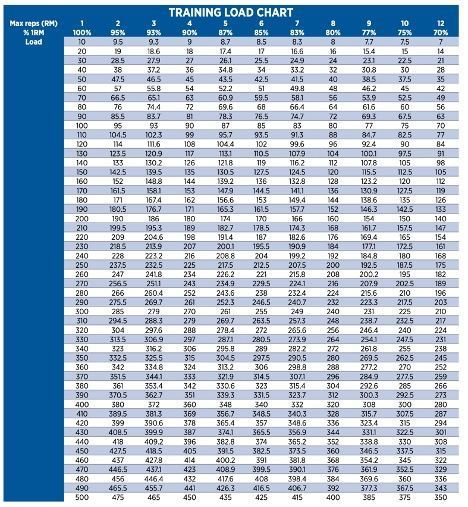A Guide to Crafting Your Very Own Weight Lifting Workout Plan
- Heather Reese
- May 29
- 4 min read

Disclaimer: This article is not intended as a workout prescription. It is important to consult with a healthcare professional before beginning any weight lifting or exercise program, especially if you have any pre-existing health conditions or concerns.
Learning how to design and execute your very own workout plan is an exciting and empowering step along your health journey. So go you! We will discuss some of the basics to creating an effective weight training workout plan.
First, you should know, creating a good weight lifting program isn't just a science; it's an art! You will find that there's an endless amount of exercises, combinations of exercises, and routines in the fitness world. Someone else's exercise routine might work really well for them, but not so much for you. So don't be afraid to get creative and try something a little different! If you're wondering, how do you know which exercises are right for me?---Simply put, I've never seen someone stick to a plan they didn't like. So, choose exercises and routines that excite you and make you feel good. The ones you find yourself enjoying and staying consistent with are the right ones.
This guide will help you identify your goal and give you a roadmap to know how you can achieve it! Included are recommendations for sets, reps, and loads, along with example workouts to kickstart your journey.
Picking Your Desired Goal
Behind every great plan there's a purpose. A goal to be achieved. What's your goal? To run faster? Complete your first ever pull-up? Squat your own body weight? Identifying your fitness goal is a crucial first step in creating your workout plan.
There are four different types of weight training. Think about which one fits your desired goal:
Endurance: If your aim is to boost your cardiovascular stamina and the ability to sustain prolonged activity, endurance training is your pathway. Research shows that consistent endurance training can improve your aerobic capacity by 15-20% in just a few months. This training style is especially great for long distance runners, cyclists or others participating in long endurance activities.
Hypertrophy: Want to increase muscle size? Focus on hypertrophy. This goal uses a balanced mixture of sets, reps, and load aimed to increase muscle size. Studies indicate that muscle hypertrophy can increase with resistance training when participants engage in 3-6 sets of 6-12 reps. If you've always dreamed of having those buff biceps, this could be a great training approach for you!
Strength: Looking to lift heavier weights and enhance overall force output? A strength-based program will work best for you. Strength training can increase overall strength and reduce the risk of injury, with many experiencing improvements of 5-10% in as little as a month.
Power: If quick bursts of strength are your target, as seen in sprinting or Olympic lifting, then power training is essential. This type of training can enhance your explosive strength, with many athletes seeing measurable improvements in performance metrics within weeks.
Align your choice with your overall fitness aspirations, lifestyle, and preferences.
Endurance Training Guidelines
Sets, Reps, and Load
For endurance-focused training, aim for 2-3 sets of 12+ reps per exercise, using weights that are about <67% of your one-rep maximum (1RM). The goal is to develop a solid aerobic base that allows sustained effort over time.
Sample Endurance Workout
Circuit Training: Include bodyweight exercises such as squats, lunges, and push-ups performed in a sequence with minimal rest. An effective circuit could involve 3 sets of 15 reps per exercise to improve endurance.
Hypertrophy Training Guidelines
Sets, Reps, and Load
Hypertrophy training typically consists of 3-6 sets of 6-12 reps per exercise with a load of around 67-85% of your 1RM. This specific volume and intensity are crucial for muscle growth.
Sample Hypertrophy Workout
Bench Press: 4 sets of 8 reps to target your chest and triceps.
Squats: 4 sets of 10 reps focusing on the quads and hamstrings.
Deadlifts: 3 sets of 8 reps to engage the entire posterior chain.
Lat Pulldowns: 3 sets of 10-12 reps to strengthen back muscles.
Strength Training Guidelines
Sets, Reps, and Load
For strength training, integrate <6 sets of 2-6 reps, utilizing heavy loads of about >85% of your 1RM. The goal is to push your limits gradually while focusing on proper form.
Sample Strength Workout
Squats: 5 sets of 5 reps to build lower body power.
Bench Press: 4 sets of 4 reps focusing on upper body strength.
Deadlifts: 5 sets of 3 reps for total body lifting capability.
Pull-Ups: 4 sets of 4 reps for upper body pulling strength.
Power Training Guidelines
Sets, Reps, and Load
Power training generally includes 3-5 sets of 3-5 reps, utilizing loads ranging from 75-85% of your 1RM. The emphasis is on explosive and rapid movements.
Sample Power Workout
Power Cleans: 5 sets of 3 reps for quick strength development.
Box Jumps: 3 sets of 4 reps to enhance explosive leg power.
Medicine Ball Slams: 4 sets of 5 reps to engage your core and upper body explosively.
Snatch: 4 sets of 2 reps to cultivate technical lifting skills.
Push Press: 4 sets of 3 reps to improve full-body power.
Your Path to Better Fitness
Creating your custom workout plan based on your specific goals can result in more effective workouts and impressive outcomes. As you progress, remember to slowly and gradually increase resistance and volume, and focus on maintaining proper form. Sometimes you may want to rush through your exercise routine--but don't! Slow and steady wins the race. Be patient with yourself and the results will come.
You are strong. You are capable. You got this!

The loading chart above is a valuable tool for athletes and fitness enthusiasts to determine their 1 rep max (1RM) and the appropriate number of repetitions based on the percentage of the load.



Comments